Summerwood:
What a wild looking baby!! Now does he have the gray gene?
Interesting that he doesn’t have the SD gene.
If he was bay I’d say he was a “wild bay”.
Very neat looking dude though! LOVE the bling!

Summerwood:
What a wild looking baby!! Now does he have the gray gene?
Interesting that he doesn’t have the SD gene.
If he was bay I’d say he was a “wild bay”.
Very neat looking dude though! LOVE the bling!
[QUOTE=DontStrikeOut;5421820]
Summerwood:
What a wild looking baby!! Now does he have the gray gene?
Interesting that he doesn’t have the SD gene.
If he was bay I’d say he was a “wild bay”.
Very neat looking dude though! LOVE the bling![/QUOTE]
Thanks!! I sold him in '09 and sent all his genetic testing to his new owner but I believe that he did test neg for the grey gene too. I thought he may turn grey eventually because he has silver m/t hair mixed in. If you look close you can see he has flaxen-colored eyelashes :). He will be really neat to see in the pony rings! Something different for sure.
Very neat indeed! Will be interesting to see what his adult coat does.
I worked with a wild bay once, and he was the neatest color. He was really light… almost chestnut looking, but had flaxen and black and red mane and tall white stockings.
Definitely Eye Catching <smile>

Get this! I had a bay mare that was bred to Foxtrot (grey) and the foal looks a lot like your guy! Flaxen mane and tail too!
What was the base coat of the greys in question?
I have a dark liver chestnut stallion, and I have to say that everyone that sees him, LOVES him. It really is such a pretty color - esp. with his chrome. - He is a product of a chestnut stallion and grey mare. When I bought him as a weanling, he looked like a normal bright chestnut. He has gotten darker with each passing year. He has full siblings that are grey and regular chestnut and even chestnut roan. So far, his foals have been liver chestnut out of a black based grey mare, palomimo out of a chestnut based (and formerly palomino) gey mare, and 2 bays out of bay mares. He is expecting more foals in the spring. Here is a foal photo and then a more recent one.
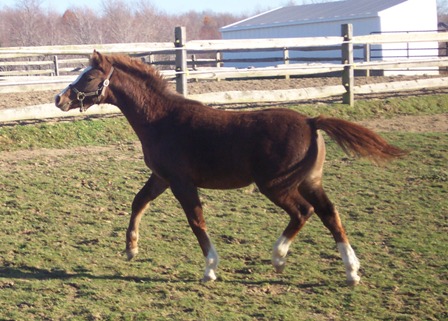

Love his color Melinda! 
^^ Agree with VB. Beautiful.
Liver chestnut is my all time favorite color. When my mare first sheds out in the spring she is nearly black looking. Even faded from 24/7 turn out she is darker than my bay mare.
And since you are talking about silvers. Here is our Silver buckskin mare too.


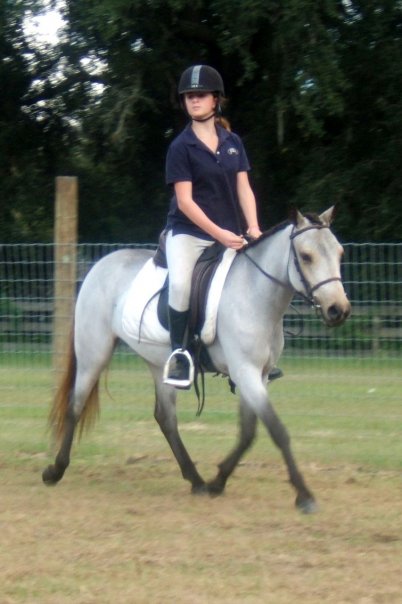
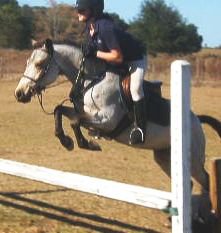
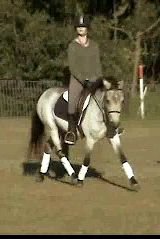
My “weirdest color” so far is this colt, photos below. Dark brown/black-bay mare, palomino sire. Born regular ol’ chestnut. The head shot of him looks “redder” than he does in person.
He was a “pewter” color as a weanling, and has a smattering of (sabino) white hairs throughout his coat. I had no idea what color to register him, so I sent a hair sample to UC Davis. He came back as chestnut. I sure would never look at him and think “chestnut”!!! (Especially with the color he is right now, but I don’t have permission from owner to post current pic!)
I have another filly, 2 this year, that is the same color. Same sire, mostly unrelated (black) dam. Also born normal, red chestnut. Now, the same color as the colt in the photos below.
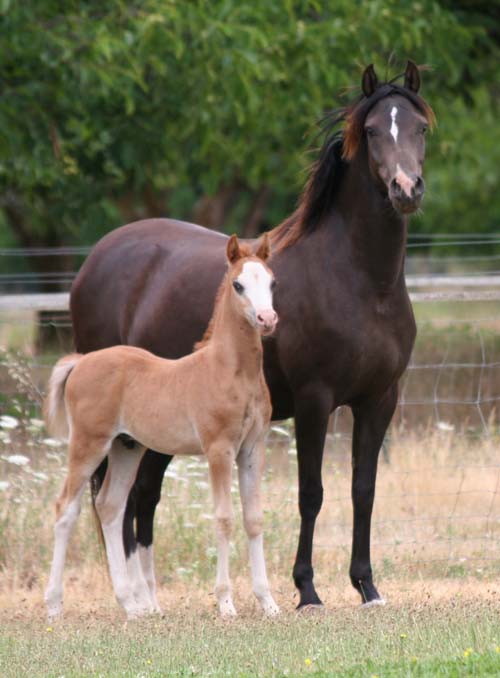
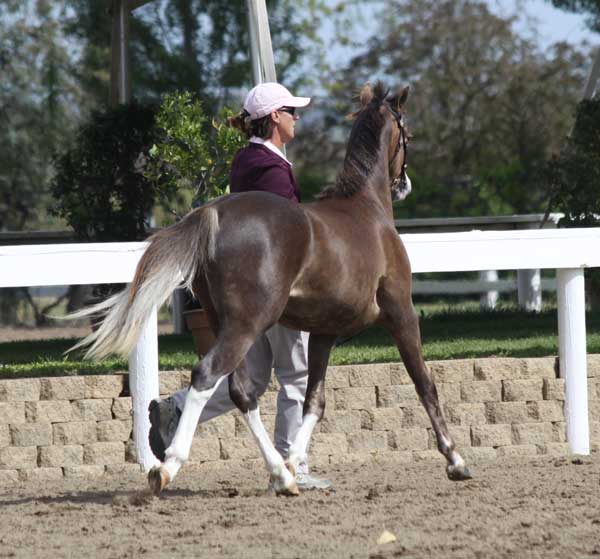
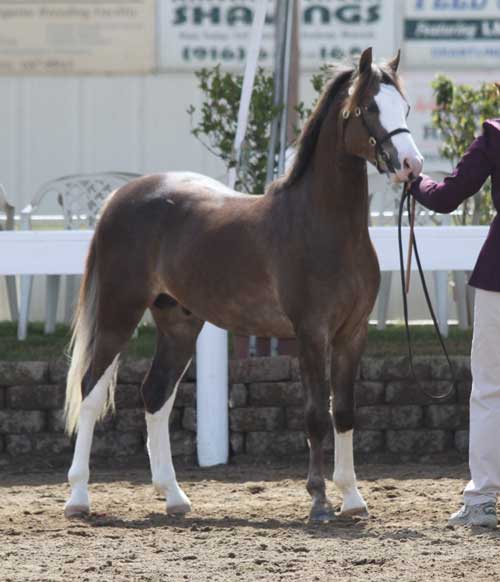
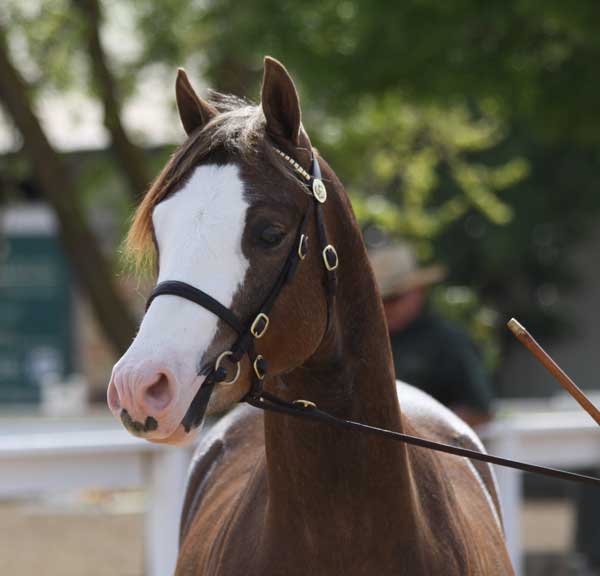
Interesting… I sure would have thought silver on your boy rideagoldenpony!
[QUOTE=VirginiaBred;5421850]

Get this! I had a bay mare that was bred to Foxtrot (grey) and the foal looks a lot like your guy! Flaxen mane and tail too![/QUOTE]
Cool!! I would love to see a photo.
DontStrikeOut, I don’t know what color the mare was when she was born (I wish I did). She is 23 this year. I think her mom might have been bay and her sire was grey. I wonder if the black parent does some funky things with color? I know nothing about color genetics, and it is the last thing in my mind when choosing a pairing but it is nice to have something different every once in a while!!:winkgrin:
http://i970.photobucket.com/albums/ae187/Timelyimpulse/Mobile%20Uploads/1226100950a.jpg
My link didn’t get picked up before, but this is Woody (Bridlewood) 2004 ch TB. Most people think he’s bay.
[QUOTE=coloredcowhorse;5421779]
I would personally like to see color testing required for registration of any horse claiming to be one of the exotic colors. I too have seen more than a few bright chestnuts with flaxen manes/tails registered as palomino (same with sooty liver chestnuts with lots of flaxen), bays with countershaded dorsals registered as duns, etc. And I’d like to see the registries (esp AQHA and APHA) list colors that are combos (AQHA at least allows notation to be made on the papers now so a red dun with cream…a “dunalino”…will have that notation on the papers if the person registering it requests…don’t know that they require testing to prove it though which I think they should).[/QUOTE]
I couldn’t agree more. Especially since AQHA does do SOME research with regards to parent/foal colors. For example, my old QH stallion was born palomino but went gray. I kept forgetting to update his papers. Finally he sired a gray foal out of a sorrel mare. AQHA called to question me because the foal color didn’t make sense according to their records.
In light of this I would think they would WANT to know the true colors of the horses they register.
I have another comment with regards to the prevalence of liver chestnuts being born to gray parents.
When a red based foal inherits the gray gene it almost always darkens the base color a tremendous amount before lightening it up to white.
Some “liver chestnuts” by gray parents might actually BE gray. Perhaps just a very slow graying gray.
There is one chestnut/gray colt at my barn that is still super dark even as a three-year old.
Here are some pics of chestnuts that are going gray:
http://www.coquatranch.com/089.JPG?0.2087495737113294
http://www.bathperformancehorses.com/images/foals2005/cheniajonescoltbig.jpg
I am sure there are many horses out there that are actually SD but listed as liver chestnut. But liver chestnut has nothing to do with SD as SD can only show up on black based horses. I do love the different colors SD can make. I am also a sucker for a liver chestnut (actually pretty much any chestnut!).
My liver chestnut mare didn’t have a grey parent. One black, the other was chestnut.
Donnerhall (liver chestnut) had two black parents. http://www.sporthorse-data.com/d?showpic=372950&time=1203846326
I’ve found that my liver mare fades to a blond color in the summer. A normal bright copper chestnut doesn’t fade, at least in my experience.
My liver chestnut mare, which I had to put down last spring, had no grays going back at least 5 generations. Both her sire and dam were chestnut, then branching out to chestnuts, sorrels, a few bays, a brown, dun, and black way back. She would fade a little by summer’s end, but would be a deep chocolate color in winter.
http://i202.photobucket.com/albums/aa243/caburke/Sass10-05.jpg?t=1297523750
http://i202.photobucket.com/albums/aa243/caburke/InvitationalHunt146.jpg?t=1297523750
I bred her to a heterozygous non-fading black (no grays in his pedigree) and she produced a red chestnut filly. Darker than sorrel, but not liver.
http://i202.photobucket.com/albums/aa243/caburke/100_1314.jpg?t=1297523750
[QUOTE=KSAQHA;5423348]
and she produced a red chestnut f